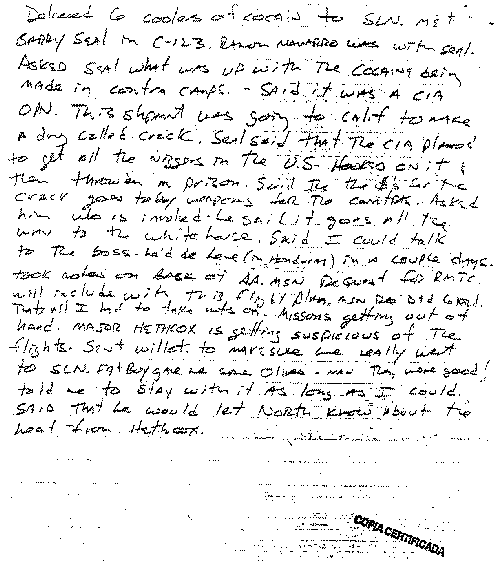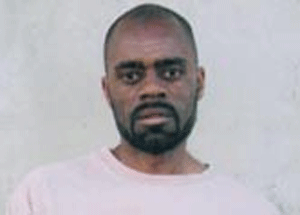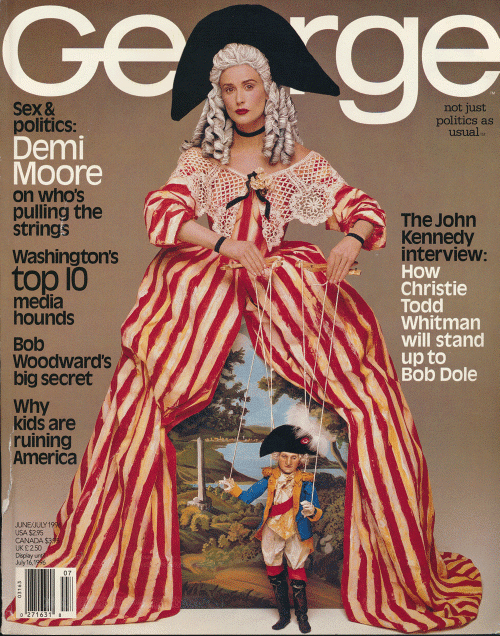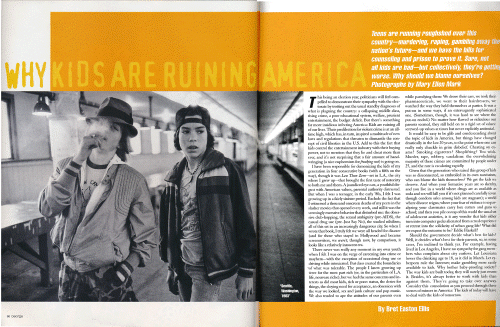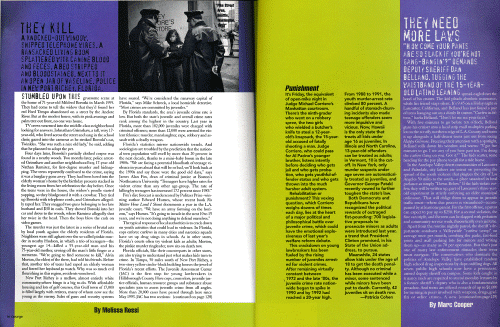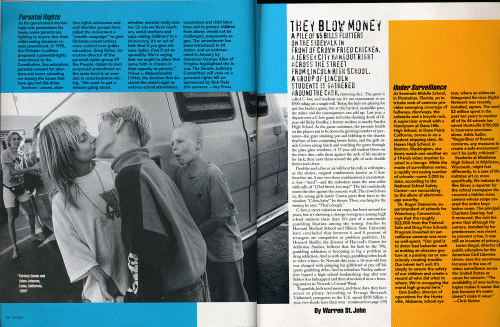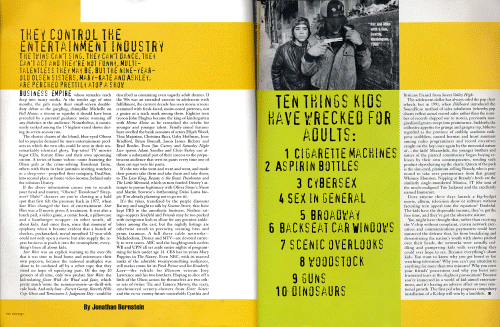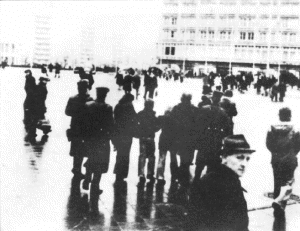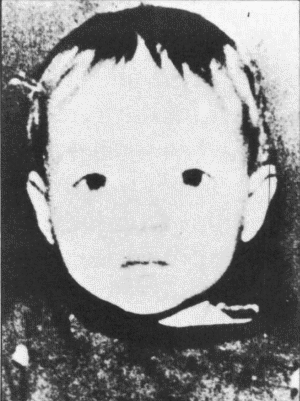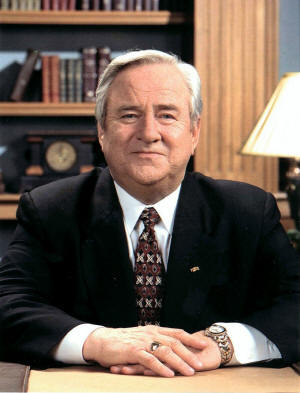by Michael C. Ruppert
January 28, 1999
(© 1999 From The Wilderness Publications and Michael C. Ruppert at http://www.copvcia.com.
NOTICE: THIS WORK MAY BE PROTECTED BY COPYRIGHT
YOU ARE REQUIRED TO READ THE COPYRIGHT NOTICE AT THIS LINK BEFORE YOU READ THE FOLLOWING WORK, THAT IS AVAILABLE SOLELY FOR PRIVATE STUDY, SCHOLARSHIP OR RESEARCH PURSUANT TO 17 U.S.C. SECTION 107 AND 108. IN THE EVENT THAT THE LIBRARY DETERMINES THAT UNLAWFUL COPYING OF THIS WORK HAS OCCURRED, THE LIBRARY HAS THE RIGHT TO BLOCK THE I.P. ADDRESS AT WHICH THE UNLAWFUL COPYING APPEARED TO HAVE OCCURRED. THANK YOU FOR RESPECTING THE RIGHTS OF COPYRIGHT OWNERS.
For a long time, many people have believed that African-Americans were targeted by the Central Intelligence Agency to receive the cocaine which decimated black communities in the 1980s. It was, until now, widely accepted that the case could not be proven because of two fallacious straw obstacles to that proof. Both lie smack dab in the misuse of the word "crack" and that is why, in my lectures, I have strenuously objected to the term "CIA crack".
First, it cannot and probably never will be established that CIA had anything to do with the first creation of crack cocaine. Chemically, that problem could have been solved as a test question for anyone with a BS in chemistry. The answer: add water and baking soda to cocaine hydrochloride powder and cook on a stove. A study of the literature (including articles I wrote 14 years ago for The U.S. Journal of Drug and Alcohol Dependence), as opposed to, for example, that pertaining to LSD, shows no CIA involvement whatever in the genesis of crack cocaine. Also, there has never been any evidence provided that CIA facilitated the transport or sale of crack itself. What is beyond doubt is that CIA was directly responsible for the importation of tons of powdered cocaine into the U.S. and the protected delivery of that cocaine into the inner cities.
Another obstacle has been the fact that CIA imported so much cocaine that, even if every black man, woman and child in the country had been using it, they could not have used all of what CIA brought in. Ricky Ross, the celebrated dealer of Gary Webb's Dark Alliance, sold approximately four tons of cocaine during his roughly five years in business. Yet one CIA ring, that of Miguel Angel Felix Gallardo and Rafael Caro-Quintero, was moving four tons a month. And that was only a fraction of the total CIA operation.
Leaving the unsupportable arguments aside, is there a supportable case that CIA directly intended for African-Americans to receive the cocaine which it knew would be turned into crack cocaine and which it knew would prove so addictive as to destroy entire communities? The answer is absolutely, yes.
And the key to proving that CIA intended for blacks to receive the drugs which virtually destroyed their communities lies in the twofold approach, of proving that they brought the drugs in and interfered with law enforcement - AND that, by virtue of CIA's relationships with the academic and medical communities, they knew exactly what the end result would be. Knowing that, we then have a mountain of proof, especially since the release of volume II of the CIA's Inspector General's Report (10/98) that the CIA specifically intended and achieved a desired result.
For anyone not familiar with the ways in which CIA studies and manipulates emerging social and political trends I cannot encourage strongly enough a reading of The Secret Team by L. Fletcher Prouty, Col., USAF (ret.).
This article is a start, a beginning on the painful work that needs to be done to build a class-action lawsuit. Such a suit, by necessity, will have to include room for all the whites, Asians and Latinos who also fell prey to cocaine addiction. But this article should convince any reader that the argument is solid - and winnable. I thank Gary Webb and Orange County Weekly reporter Nick Schou for giving me the missing pieces I had waited nineteen years to find.
As a budding LAPD narcotics investigator I was selected in 1976 to attend a two-week DEA training school in Las Vegas. The diploma I received from that school, approximately 30% larger than the one I received from UCLA, hangs above my desk to this day. At that school I was given the official position of the DEA and the government, which was that cocaine was less addictive and less harmful than marijuana. I had only made one arrest for cocaine, a heroin addict who liked speed balls (heroin and cocaine mixed), and I had seen it less than a half dozen times in my life.
One of those times was right after my fiance Nordica D'Orsay, a CIA agent, had broken her ankle in the summer of 1976. Before I could take her to the emergency room she had to make some urgent calls from a pay phone equipped with the then new touch-tone technology. Our home phone was monitored, she said. Having broken both ankle bones she was in severe pain. She went into her purse and produced a paper bindle filled with a white crystalline powder. She rolled a dollar bill and snorted the powder. Her people, she said, recommended it to treat pain when an agent was wounded or over-tired and needed extra strength. Once she ingested what was in the bindle we delayed for about an hour while she made the urgent phone calls from a gas station. Only then was I permitted to take her to the hospital. Her ankle had swollen to the size of a grapefruit. She came out five hours later with a cast from her toes to her crotch. Who was I to question the CIA?
That was the only time I was ever aware of her in physical possession of cocaine. But it was not the only time she ever talked about it.
In 1979 Congress held rushed hearings into the perils of cocaine and was told, time and again by expert after expert that cocaine was not a problem because it was not seriously addictive, too expensive and not easy to find. The hearings, chaired by Republican Congressman Tennyson Guyer in the House Select Committee on Narcotics Abuse and Control did not live up to Guyer's hopes of finding a devil in the drug cocaine.
"Witness after witness trooped up to the microphone to tell Congress that cocaine was not only a relatively safe drug, but so rare that it could hardly be called a nuisance, much less the menace Guyer was advertising." (Webb - p24). Ron Siegel, PhD of UCLA's Neuropsychiatric Institute (NPI) had written in an earlier monograph, "The rediscovery of cocaine in the seventies was unavoidable because its stimulating and pleasure-causing properties reinforce the American character with its initiative, its energy, its restless activity and its boundless optimism." (Webb - p19).
Siegel, one of the world's leading experts on drug abuse had, however, written a February, 1979 article for The New England Journal of Medicine which warned of a growing trend toward the smoking of cocaine (freebase, not rock) in the western United States. He traced the origins of freebasing back to 1974 in the San Francisco Bay area. He, like others, noted that smoking was a much more effective and powerful way to ingest cocaine because the surface area of the lungs absorbed the drug more rapidly, more efficiently and in larger quantities. He cautioned that smoking cocaine was also many times more addictive than snorting. Yet Siegel concluded, "All in all the long term negative effects of cocaine use were consistently overshadowed by the long term positive benefits," (Webb - pp. 31-33).
The witnesses testifying before congress included the heads of the Drug Enforcement Administration, that National Institute on Drug Abuse (NIDA) and a host of medical and psychiatric experts. The conclusion: cocaine was not a problem.
[NOTE: My sixteen years in 12 Step recovery from alcoholism and my work with scores of recovering alcoholics and addicts belies the fact that powdered cocaine can be, in and of itself, extremely destructive and addictive.]
Only one man, Dr. Robert Byck of Yale University was insistent that trouble was coming and it was BIG trouble. Byck was a professor of psychiatry and pharmacology at Yale Medical School. He began his testimony by stating, "What I would like to talk to you about for the most part is the importance of telling the truth. We have given a great deal of cocaine to many individuals and find it to be a most unremarkable drug."
But, according to Webb, "Byck told the Committee that he'd hesitated for a long time about coming forward with the information and was still reluctant to discuss the matter at a public hearing. 'Usually, when things like this are reported, the media advertises them, and this attention has been a problem with cocaine all along.' The information Byck had was known to only a handful of drug researchers around the world.
"For about a year, a Peruvian police psychiatrist named Dr. Raul Jeri had been insisting that wealthy drug users in Lima were being driven insane by cocaine. A psychiatrist in Bolivia, Dr. Nils Noya, began making similar claims shortly thereafter." What had been discovered was an addiction so overwhelming that middle and upper class students and middle class wage earners in Peru and Bolivia had abandoned every aspect of a normal human life, including eating, drinking, personal hygiene to the point of defecating in clothes that would remain unchanged for days, family and shelter in the pursuit of "basuco". (Webb - pp25-30).
Basuco, a sticky paste, was the first-stage product in the refinement of coca leaves into powder. Although frequently mixed with a cesspool of toxic waste such as gasoline, kerosene and other chemicals, the pharmacological effects of smoking basuco are identical to the effects of smoking crack cocaine which became popular in the US ten years later. So intense was the addiction that desperate South American psychiatrists had resorted to bilateral anterior cyngulotomies (lobotomies) to stop the addiction (Ruppert 3). But even these drastic measures resulted in a relapse rate of between 50-80% (Webb - p36) (Ruppert 2). Yale medical student David Paly, working under Dr. Byck, recalled a 1978 conversation with his mentor. "The substance of my conversation with Byck was that if this ever hits the U.S., we're in deep trouble." (Webb - p30)
Byck traveled to Peru to attend a symposium on cocaine with Siegel and other experts in 1979. Later he obtained police permits and federal grants to begin intensive research into cocaine smoking (Webb - p 31). The CIA routinely monitors overseas travels of U.S academics and the purposes of their travels. Since the Nixon Administration, emerging drug trends in producing countries had been a mandate of CIA collection efforts. When law enforcement grants, approvals and funding crossed international boundaries, the Law Enforcement Assistance Administration (LEAA) and several special units within CIA were automatically notified. Here, we begin to see that CIA must have been well aware of the effects of basuco. The CIA's well-documented role in providing training, assistance and advice to Latin American law enforcement agencies guarantees that CIA was collecting intelligence on the destructiveness of cocaine smoking as soon as it began to be a problem. (Colby, Prouty). That was as far back as 1974. (Webb - p33).
By the time the government was compelled to acknowledge that cocaine smoking had reached the U.S., and that it was having a devastating effect, the experts, including Siegel and Byck, who was now warning of an epidemic of near biblical proportions, encountered nothing but resistance from the government.
According to Webb "Byck said the Food and Drug Administration shut down attempts to do any serious research on addiction or treatment, refusing to approve grant requests or research proposals and withholding government permits necessary to run experiments with controlled substances. 'The FDA almost totally road blocked our getting anything done. They insisted that they had total control over whether we could use a form of cocaine for experimental purposes, and without a so-called IND [an Investigation of New Drug permit] we couldn't go ahead with any cocaine experiments. And they wouldn't give us an IND.
"'Why not? Once you get into the morass of government, you never understand exactly who is doing what to whom and why.'" (Webb - p 37)
Again, to understand how CIA infiltrates various government agencies including the FDA, The Forest Service and the Postal Service I recommend Prouty and From The Wilderness (Dec. 1998).
What was Ron Siegel's experience? According to Webb, "When Siegel, under U.S. Government contract, finished a massive report on the history and literature of cocaine smoking, he couldn't get the government to publish it." (Webb - p37). This writer interviewed Ron Siegel a number of times in the mid 1980s and what I learned was that all of his studies had shown that "rock" smoking, as it was then called, was, in effect, the bubonic plague of drug abuse.
Between 1984 and 1987 I served as the West Coast Correspondent for The U.S. Journal of Drug and Alcohol Dependence. During that time I had a number of occasions to interview some of the world's leading experts on drug abuse and rock cocaine. They included Dr. Louis "Joly" West, Dr. Sidney Cohen and Ron Siegel. All were a part of UCLA's Neurospychiatric Institute (NPI) which is a world-renowned facility that includes among its specialties drug abuse research. NPI is also jointly funded by the RAND Corporation, which was a creation of the CIA and the U.S. Air Force. How tight is the relationship between NPI and RAND? A check of NPI's home page on the Internet (http://www.hsrcenter.org/program) reveals that 5 of 19 faculty scholars and 19 out of 54 current investigators at NPI come from the RAND Corporation.
A check of the RAND Corporation's home page (http://www.rand.org) leads to the following quote: "RAND's research agenda has always been shaped by the priorities of the nation. With roots in the Cold War competition with the Soviet Union, the early defense related agenda evolved -- in concert with the nation's attention -- to encompass such diverse subject areas as space, economic, social and political affairs overseas; and the direct role of government in social and economic problem solving at home."
I remember when I was as a young boy, that my father, who worked on CIA related projects for Martin-Marietta Corp, met frequently with people from the RAND Corporation. In fact, my first boyhood crush was on the daughter of a RAND executive. It was no small matter of pride in my family that RAND was known to be part of the CIA.
As further corroboration for RAND's connection to both UCLA and the CIA, I met with UCLA Political Science professor Paul Jabber in early 1982. It was Paul who confirmed for me that the National Security Council and CIA had approved the use of heroin smuggled through Kurdestan, as a means of (re)arming the Kurds to fight against Saddam Hussein in 1975. This was the operation which, when I discovered it, ended my LAPD career in 1978. (For further on this see my written Senate testimony at http://www.copvcia.com.)
Paul Jabber had been a RAND consultant and an NSC/CIA consultant throughout the Carter Administration. He was still a RAND consultant when I met him at UCLA.
A search of retired CIA officer Ralph McGehee's excellent CIABase (http://www.ciabase.com) reveals 73 pages of annotated references to CIA's longstanding relations with academia. Two portions of those printouts are telling. One, a response to a Freedom of Information Act request, turned up more than 900 pages of documents relating to CIA contracts with the University of California. Another quote indicates that, circa 1957-77, "Docs released under FOIA reveal long history contacts between CIA and University California. Activities cover wide range cooperation between several of its 9 campuses including: UC Vice Presidents 2-week tour with CIA in which he advised Agency relating to student unrest, recruiting UC students, Academic cover for Professors doing research for the CIA, and improving CIA's image on campuses; a series of CIA sponsored seminars in Berkeley and other sites for professors to share info with CIA; providing a steady flow of CIA material on China and the USSR to CIA-approved professors."
The CIA connections grow deeper and more ominous. Louis "Joly" West, who died this month, served for many years as Director of NPI. The documentation from government records is voluminous that West was a pioneer for CIA in the development of and experimentation with LSD in the 1950's and 1960s. The first time I met him a group of doctors were joking about how he had "administered 10,000 micrograms of LSD to an enraged elephant for the CIA. The elephant died. I recall one doctor quipping, "I sure am glad it was a communist elephant!"
One last note before we move on: Joly West, is extremely well documented from CIA's own records as having been one of the principal researchers in CIA's MK-ULTRA program which used drugs and torture to produce mind-control assassins and other useful servants. I recall one telling discussion with NPI's sympathetic Dr. Sid Cohen who knew of my past struggles against CIA. He told me, "CIA pretty much knows everything we do at NPI. It was set up that way from the start." Cohen was qualified to speak on this subject. He had been a consultant for the State Department, the U.S. Army and the World Health Organization.
If that was the case, and if NPI housed some of the world's foremost experts on crack cocaine, it is impossible not to believe that CIA didn't know what UCLA, RAND and the governments of Ecuador, Peru and Bolivia knew.
Until the book Dark Alliance and an absolutely fabulous series of articles appeared in The Orange County Weekly by reporter Nick Schou, I had been unconvinced that CIA had directly targeted African-Americans. I believed it in my heart, but I had never seen the evidence to prove it. In August 1996, right after the Webb stories appeared, I was a call-in guest on a number of radio talk shows with Gary, and I recall stating that I knew nothing about CIA selling crack cocaine on street corners, but I knew a great deal about CIA bringing it in on airplanes and boats. It was not until Schou's series and Webb's book appeared that I was not only convinced, I was certain that CIA had targeted blacks.
It is beyond the scope of this article to describe just how well Gary Webb used court records, DEA, Justice Department, CIA and L.A. County Sheriff's records to establish that the drug dealing operations of Danilo Blandon and Norwin Meneses were sanctioned and protected by both DEA and the CIA. The revelations in both volumes of the CIA's Inspector General's reports, as covered in From The Wilderness, corroborate much of Gary's work.
In particular, Webb documented how Ricky Ross always seemed to avoid arrest at the peak of his career. Danilo Blandon's direct connections to CIA assets and agents are now a given. Let's look at what Ricky Ross had to say about Blandon. "All I knew was like, back in LA he [Blandon] would always tell me when they was going to raid my houses. The police always thought I had somebody working for the police.
"And he was always giving me tips like, 'Man don't go back over to that house no more,' or 'Don't go to this house over here.'" (Webb - p179)
The police told of serious frustrations at trying to arrest Ross. The most telling event was when a joint task force of Sheriffs, LAPD and other agencies set out to raid fourteen different locations in 1986. All of them had been cleaned out by the time the surprise raids hit. (Webb - p310-321). Only one location, the home of Ronald Lister, turned up anything of value -- government documents. Both Webb and Schou tied Lister directly to CIA and Contra support operations and to Scott Weekly, an Annapolis classmate of Oliver North. Subsequent investigations, lasting into 1997, not only showed evidence of Weekly's links to CIA and DIA, including FBI wiretaps of his phone conversations, but also established links between Weekly, North and the staff of Vice President George Bush (Webb - pp320-323). Sheriff's deputies and LAPD officers were amazed and knew full well that they were investigating a CIA operation, which was being protected. Hundreds of pages of government documents mysteriously disappeared from Sheriff's custody and Blandon never got arrested. Neither did Ricky Ross until much later.
One of the heroes of Dark Alliance, Bell PD detective Jerry Guzetta, summed up all of the police experience in trying to arrest Ricky Ross and Danillo Blandon. "Every policeman who ever got close to Blandon was either told to back off, investigated by their department, forced to retire, or indicted," (Webb - p375).
In early November 1996, two weeks before I confronted CIA Director John Deutch at Locke High School in Watts, I attended another congressional town hall meeting in Compton hosted by Congresswoman Juanita Millender-McDonald. At that meeting, before I took the microphone to talk about CIA drug dealing, I had an opportunity to talk in private with Department of Justice Inspector General Michael Bromwich and the commander of LAPD's Narcotics Group, Commander (now Deputy Chief) Gregg Berg. I told both men exactly how CIA protected their drug operations.
At the time, all police agencies belonged to an organization known as the Narcotics Intelligence Network (NIN). Any law enforcement agency conducting an investigation of a drug trafficker must first run the suspect's name through a computer search to find out if anyone else has an ongoing investigation of that suspect. Such an arrangement is necessary to prevent one agency from arresting another agency's undercover operatives. What the CIA does is to use its contract agents or deep covers within local police departments to constantly monitor NIN, which has to be notified of pending raids. The CIA also uses its deep covers within police departments to monitor investigations and warn CIA assets in time to avoid arrest.
How did I know this? Ten years before the Ricky Ross raids, in 1976, my CIA agent fiance had told me this was how "her people" protected certain things. The job she was recruiting me for, which I refused to take, was to work myself, with a little help, into a position where I would be the one doing the monitoring -- and the warning. She once told me that she had asked "her people" if she could give me information which would lead directly to a Los Angeles arrest of a major dealer. They wouldn't let her because I had already told her that I would never overlook illegal narcotics. The unspoken message was that if I wouldn't overlook when asked, I couldn't be given a "freebie".
Lister, an ex-policeman who served as a bodyguard/courier for Blandon delivered both drugs and money while enjoying CIA protection. He and Blandon delivered drugs and guns all over South Central. Danillo Blandon even sold guns to Ricky Ross' immediate entourage. Ollie Newell, Ross's partner, was able to purchase a .50 caliber machine gun on a tripod (Webb p 188). This is a pure military weapon known as a "Ma Deuce," and something which is not obtainable at your local surplus store.
Webb and Schou also documented that the police and the FBI knew that Lister and Blandon were delivering not only guns but sophisticated radio equipment (which enabled the monitoring of secure police frequencies) to Ross and the gangs (Webb - pp. 179-193) (Schou). I knew then that the whole operation was protected from start to finish by the Central Intelligence Agency. Why? If you walk into a room filled with policemen and yell "Anybody want to take some drugs off the street?" maybe half the room will stand up. But if you walk into the same room and yell, "Anybody want to take some guns off the street?" you will be crushed in the ensuing stampede. Only the federal government, and especially the CIA, have the horsepower to make cops stay away from arresting those who put guns on the streets.
Nick Schou demonstrated how Lister, through arms dealer Tim La France and Weekly (who is himself a firearms master), was working on Agency contracts serious enough to secure him end-user certificates from the State Department to export weapons in a matter of days, when the process usually requires months. Indirect confirmation of these relationships was established when the FBI denied release of some of Lister's documents under provisions of the National Security Act (Webb - p 193).
As documented by phone records and telephone calls placed to the Fluor Corporation in Irvine, California by Lister's associates, Ron Lister held frequent meetings with a Fluor Vice President named Bill Nelson (Webb - pp191-193) (Schou). Bill Nelson was a retired Deputy Director of Operations (DDO) of the CIA who had personally overseen the destabilization and overthrow of Chile's Salvador Allende in the 1970s. The DDO is the second most powerful position in the CIA, and is directly in charge of all covert operations. The Fluor Corporation, according to confidential sources, was a major multi-national corporation which regularly provided services and cover for the CIA over a period of roughly fifteen years.
It is inconceivable that a courier and contractor like Lister could have held regular meetings with a retired DDO in Southern California unless he was protected at the highest levels. One good narcotics detective could have tailed Lister to one meeting which would have been enough to totally compromise the Agency -- especially if it had occurred just after Lister had transported twenty kilos of cocaine or a trunk load of sub-machine guns. Conversely, it is also inconceivable that a retired DDO would meet with anybody unless he knew everything in the world there was to know about that person beforehand. The Agency just does not work that way.
A former CIA officer, John Vanderwerker, confirmed to Schou that Nelson and Lister knew each other (Webb - p195).
Crack cocaine was particularly devastating for African-American communities. This was, I believe, by design. In early 1985, USC Sociologists Klein and Maxson researched the phenomenon of crack use. "One thing they were unable to explain was why crack was found only in L.A.'s black neighborhoods. 'The drug," the sociologists wrote, at least currently seems to be ethnically specific. Cocaine is found widely in the Black Community in Los Angeles, but it is almost totally absent from the Hispanic areas," (Webb - p184).
And the effects of crack use were, indeed, biblical. In 1985, 50% of the emergency room admissions in L.A were due to crack. Full-blown cocaine psychosis was occurring as soon as eight months after first use, and crack cocaine hit hardest among those African-Americans who had some college education and held steady jobs (Ruppert1&2).
I wrote in 1985. "So pervasive is the epidemic that it is threatening the political and social systems that have held black communities together in the face of cuts in social programs and rising unemployment in an already depressed economy," (Ruppert 1).
The Webster Commission, charged with finding the causes of the 1992 LA riot/insurrection, found that one of the primary causes was crack cocaine. The LA riots remain, to this day, the largest domestic insurrection since the civil war.
--------------------
Picture a jury trial for a man accused of arson. No one saw the man light the match (taught the dealers how to make the crack). Yet there is incontrovertible evidence that the man knew and had studied fire science and thus knew that by pouring gasoline onto dry wood and striking a match, that the wood building would burn. There is also incontrovertible evidence that the man brought gasoline, small bits of kindling and a person who liked to play with matches to a large building. There is also hard proof that the man, once a fire had started, deliberately interfered with fire fighters attempting to reach the blaze. Then he brought in lots more gasoline. Not only that, but the man provided the match striker with guns and radios which monitored the fire department frequencies so that he could fight off firefighters and continue lighting more fires.
As the building burned, and people died inside, our suspect attempted to cover-up for the match lighter, and interfered with law enforcement investigations into his activities. He even lied to Congress, which was alarmed by the damage and the number of deaths. And, being trusted by Congress, our suspect continued to thwart attempts to stop the fire and find the cause.
Such a man would be convicted of arson in a heartbeat.
10 April, 1985
We were tasked with flying six coolers marked "medical supplies" to San Lorenzo, Honduras. While we were flying on 9 April, Dr. Gus (General Gustavo Alverez), delivered six coolers to Dustoff operations. I opened all six coolers to check their contents. I only counted the packages of cocaine in one of the coolers. There were 110 packages. Major Hethcox, the Aviation Support Commander, sent his Administrative Officer, Lt. Willett, to Dustoff Operations to fly one leg of our flight as my co-pilot. I suspected Hethcox was curious why we were flying so much. We loaded the coolers marked "medical supplies" and headed for San Lorenzo (SLN). Upon arrival we hovered to a C-123 cargo aircraft that we had met the previous day. The C-123 was based out of El Salvador and was tasked with carrying the cargos from San Lorenzo back to El Salvador. I noticed something familiar as the C-123 pilot approached. It was Barry Seal, an old friend.
Barry was holding a jar of olives in his hand as he walked up to the chopper and greeted me. Barry had promised me weeks before in Panama, during a meeting with Harari, Noriega, and North, to see that I got some olives. I had visited the base liquor store (Class 6) at Howard Air Force Base, but it was out of olives, as was the commissary. I told him that I didn't expect "curb-service." He gave his cherub laugh and invited us to a caf‚ for a coka-cola. The crew joined us as he commandeered an Air Force truck for the short drive from the airstrip to the village.
Barry and I walked outside of the cafe so that we could talk privately. I asked Barry to level with me concerning the drugs and who was involved. I felt that Barry Seal was the only person I had met to date that I could get a straight answer out of. The following is what Barry Seal told me concerning the drugs in general and, more specifically, the destination of the drugs which we delivered to San Lorenzo on 9 and 10 April, 1985.
"The Contras needed weapons for their rebellion against the Sandinistas. When the CIA approached the Contras in the early 80's they promised total support in weapons, training, and money required to sustain the operations. This is what prompted the Nicaraguans to begin open recruiting against the Ortega-led Sandinista government. But, as time went on, the U.S. renigged on their promise to the rebels. Not only did the U.S. cut money needed for medical and food supplies for the Contra camps, but they also refused to provide the weaponry needed to stay alive. This left the Contras in a hell of a spot. William Casey met with Adolfo Colero and it was decided that the Contras would get the much needed money and weapons in exchange for cocaine. Casey put Ollie North over the project. North, at the CIAs promptings, recruited Seal to oversee delivery of the products, and a man named Ramon Navarro (Medellin Cartel) to train the Contras in the manufacturing process. Colero was the "point man" for the Contras. He dealt with Washington and others as needed. Contra leader Enrique Bermudez was tasked with getting the cocaine kitchens built and protected. Bermudez had solicited three other Contra commanders to assist in this project. Their names are Commander Fernando, Commander Franklin, and Commander Marlan. Ramon Navarro supplied the cocaine paste and raw coca leaves to the Contras. The U.S. provided the equipment. It was delivered to the camps by Chinook helicopters (CH-47) out of Ft. Campbell, Kentucky (159th Aviation Battalion). It was Barry's job to deliver the finished product and monies to destinations as dictated by Mr. North.
Barry gave me the names of his various drop points and told me to be very wary of North. "He'll give up his mamma if he has to!" was his comment concerning North's lack of honor. He also gave me the names of U.S. officials, politicians, and drug enforcement officials involved in the cocaine enterprise.
I asked him to be exact about the shipments so that I could better understand. He used the six coolers that we just delivered as his example. He said that these coolers and the coolers delivered the previous day would be taken to El Salvador. From El Salvador they would be taken to a site in Southern California. There it would be distributed in rock form called "crack." I made note of his comments and his "Boss Hog" list, as Barry called it, on the back of the flight plan concerning this specific flight. The notes were made on the evening of 10 April, 1985.
Transcription:
Delivered 6 coolers of cocaine to SLN. Met Bany Seal in C-123. Ramon Navarro was with Seal. Asked Seal what was up with the cocaine being made in contra camps. - Said it was a CIA OPN. This shipment was going to Calif to make a drug called crack. Seal said that the CIA planned to get all the niggers in the U.S. hooked on it & then throw 'em in prison. Said the $'s for the crack goes to buy weapons for the contras. Asked him who is involved -- he said it goes all the way to the white house. Said I could talk to the boss -- he'd be here (in Honduras) in a couple days. Took notes on back of AA. Msn request for RMTC. Will include with this flight plan. Msn RQ dtd 6 April.
-- The Chip Tatum Chronicles: Testimony of Government Drug Running, by Chip Tatum
_______________
SOURCES:
The Dark Alliance The Straight Dope- Between The Rock and a Hard Place by Michael C. Ruppert, The LA WEEKLY, March 8-14, 1985 (referenced as Ruppert 1).
- Rock Cocaine Hits L.A. by Michael C. Ruppert, The U.S. Journal of Drug and Alcohol Dependence, February, 1985 (referenced as Ruppert 2).
- U.S. Drug Experts Cancel S.A. Trip, by Michael C. Ruppert, The U.S. Journal of Drug and Alcohol Dependence, November, 1984 (referenced as Ruppert 3).
- Thy Will Be Done, The Conquest of the Amazon: Nelson Rockefeller and Evangelism in the Age of Oil. - Gerard Colby, Harper Collins, 1995 (Referenced as Colby).
- The Secret Team (3rd Edition), L. Fletcher Prouty (1973, 1992, 1997). This book has been erased even from the Library of Congress. To my knowledge it is available only on the Internet at http://www.ratical.org/ratville/JFK/ST (referenced as Prouty).

